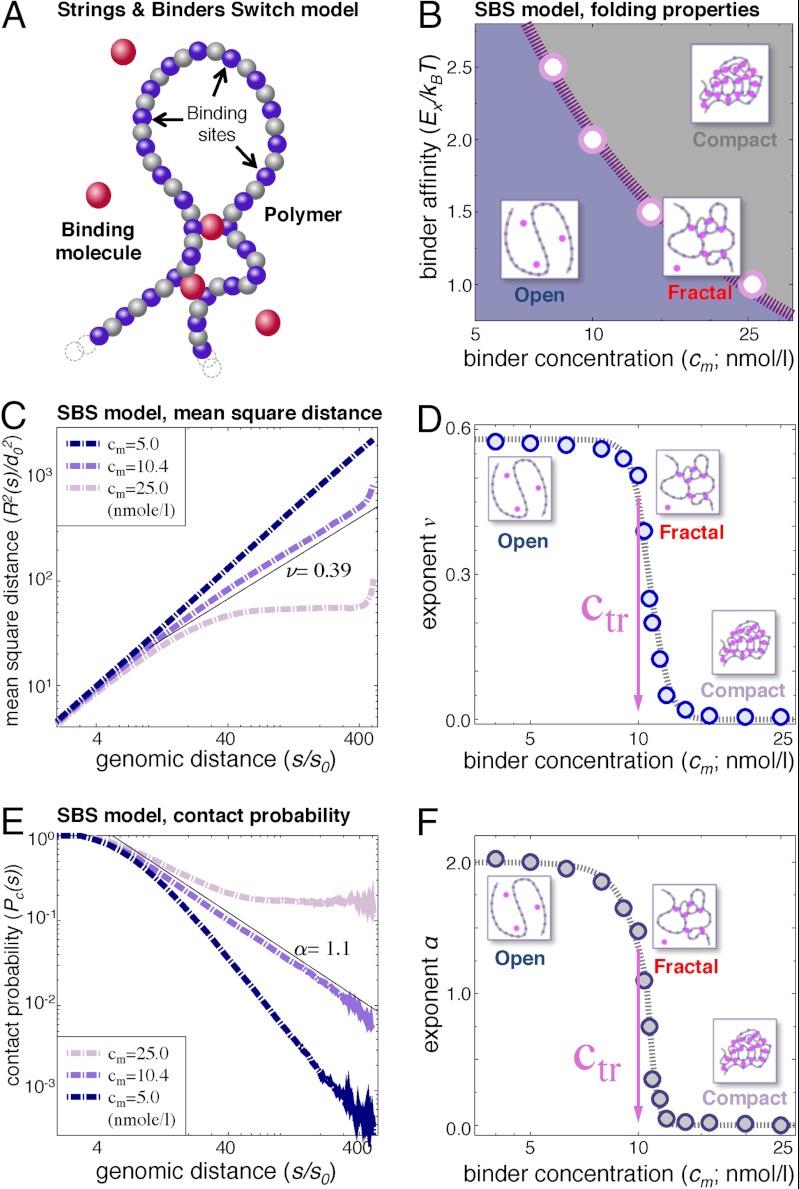Fig. 1.
The emerging stable states of the SBS model and the mechanisms of its self-organization. (A) Schematic representation of the SBS model. A chromatin filament is represented by a SAW polymer comprising n beads randomly floating within an assigned volume. A fraction, f, of beads (binding sites) can interact with Brownian molecules (magenta spheres; binders) with concentration cm and binding site affinity EX. In this example, f = 0.5 for an equal number of blue (binding) and grey (nonbinding) sites. Molecules bind more than one polymer site, allowing for loop formation. (B) Three classes of states exist. The phase diagram illustrates the conformational state of the system as a function of two main control parameters, cm and EX. The system is in an open randomly folded conformation below the transition line, Ctr(EX) (dashed curve), it folds in a compact conformation above it, and it takes a different fractal structure at the transition point. (C) The polymer mean-square distance. R2(s) is the mean-square distance (in units of the bead linear length d0) of two polymer sites having a contour distance s. R2 is shown as a function of s for three values of the binder concentration, cm = 5, 10.4, and 25 nmol/L, corresponding to below, around, and above the transition point (here, EX = 2 kBT). At large s, R2(s) has a power-law behavior R2(s) ∼ s2v; at cm = 10.4 nmol/L we find ν ∼ 0.39. For s/s0 > 400, finite size effects are seen. (D) The power law exponent of R2(s) has three regimes. The exponent, ν, has a sigmoid behavior as a function of cm, corresponding to different system states, with ν ∼ 0.58 for cm < Ctr; ν ∼ 0.5 at Ctr = 10.0 nmol/L; and ν ∼ 0.0 at cm > Ctr. (E) Site contact probability. Pc(s) is the contact probability of two sites with contour distance s along the polymer chain. It is plotted for cm = 5, 10.4, and 25 nmol/L. At large s, a power law is found: Pc(s) ∼ 1/sα. We find α = 1.1 at cm = 10.4 nmol/L. (F) Power law behavior of Pc(s). The Pc(s) exponent α expressed as a function of cm also displays three regimes: below, around, and above Ctr.

